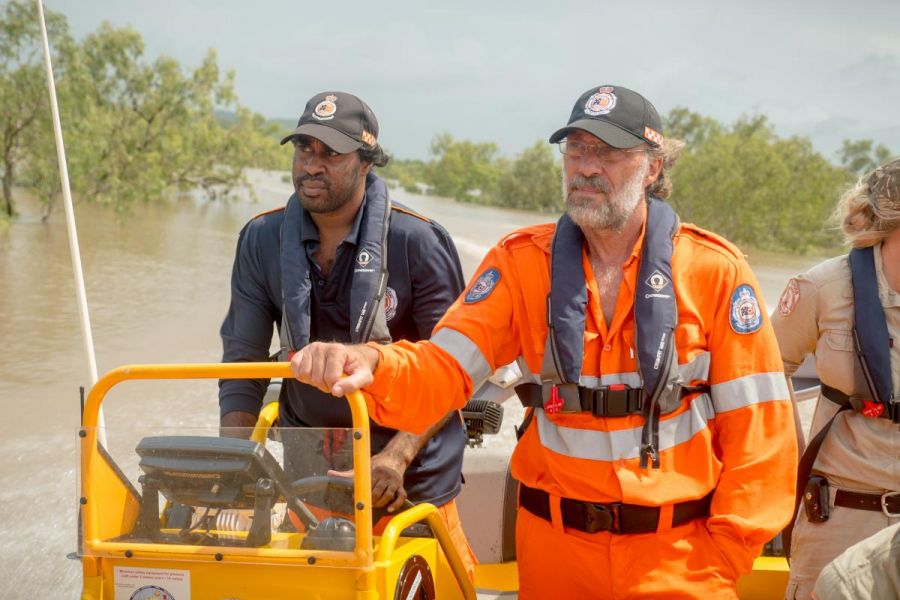
The Territory is prone to some of the most extreme weather events in the world.
For certain parts of the Northern Territory, flooding is a very real possibility, and if you live in one of these areas you need to know how to be prepared and what to do in the event of flooding.
Katherine and Alice Springs are the two of our largest populated areas that are often affected by floods, and then there are the smaller, less populated surrounding and remote communities that are often cut off and/or suffer flooded conditions as well.
- So, how do I prepare for floods?
Now is the time to act, BEFORE the wet arrives and you've been left with not enough time to prepare yourself, your family or your home.
- Know your local flood history and community plans - read through our publications plus NT Floodplain maps and NT Rainfall and River Conditions.
- Make a household emergency plan.
- Decide where you will shelter.
- Prepare an emergency kit that can sustain your family for at least 72 hours.
- Store important documents in a portable, waterproof wallet and place in an accessible spot in your home.
- Always consider the potential for flooding when storing items around the house and identify high points for stacking and storing possessions and furniture.
- Find out how to make the home more flood resistant.
- Check insurance policy.
- Keep outside drains free of debris.
Community safety within the Northern Territory environment is everyone's responsibility and can only be achieved through a partnership between the NT Government and the community. To reduce the risks posed by emergencies and disasters, the Northern Territory Government provides a general level of community safety in a number of ways, including the provision of Emergency Services, emergency planning coordinated by the Emergency Management Council, infrastructure such as hospitals and emergency shelters and land use planning.
Therefore your role in that partnership is to ensure the protection of your family, your home and your possessions. Once you have established which disasters or emergency situations could affect you, the next thing you should do is sit down with your family and discuss what you will do in an emergency or disaster.
For more information on household emergency plans, shelters and what to include in your emergency kit visit Your emergency planning.
- Act on flood warnings
- Listen to your local radio/TV for further information.
- Check that your neighbours know of the warning.
- Stack furniture and possessions above likely flood level, on beds and in roof (electrical items on top).
- Move garbage, chemicals and poisons to a high place.
- Secure objects that could float and cause damage.
- Protect/relocate valuable stock and equipment.
- If on the land, move livestock to high ground.
- Check your car and fill it with fuel.
- Check emergency kit and fresh water stocks
- If you need to evacuate
You may be advised to evacuate by local authorities, but if you leave of your own accord, tell police or NT Emergency Service and your neighbours. In either case, take the following actions:
- Empty freezers and refrigerators leaving doors open (to avoid floating and subsequent damage).
- Collect and secure your personal valuables, papers, money, photo albums and family mementos.
- Turn off power, gas, water, and take your emergency kit.
- Whether you leave or stay, place a sandbag in the toilet bowl to prevent back-flow of sewage into your home.
- During and after the flood
If you remain in your home, or when you return, take these precautions:
- Keep listening to your radio for all official advice.
- Follow your household plan.
- Remain in your shelter area.
- Contact family members who are away from home and tell them to return only when safe.
- Keep in touch with neighbours and assist if necessary.
- Before entering any flood-affected part of the home, ensure it is safe to do so; consider:
- the structural safety of the building,
- the safety of electrical and gas supplies including electrical appliances,
- whether sewerage systems are working correctly,
- whether there may be potential slips, trips or falls within mud and water and
- whether any spiders, snakes or debris are present.
- Wear non-slip footwear, protective clothing and puncture-resistant gloves whilst cleaning-up and use disinfectant. Never consume food or liquid that has been in contact with floodwater. Replace damaged floor coverings, furniture and fittings with water resistant alternatives.

